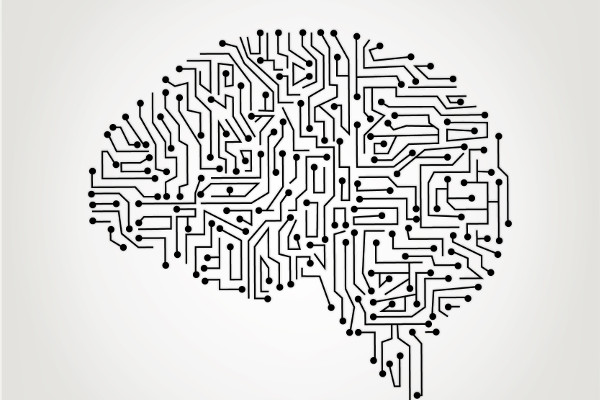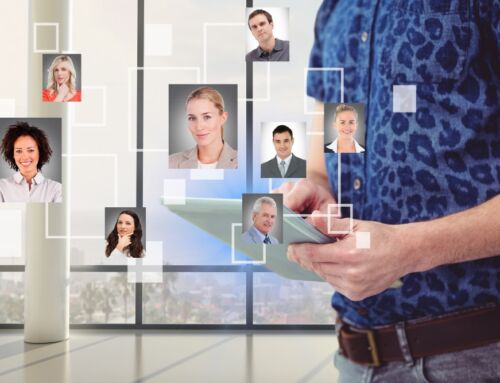Artificial intelligence and machine learning are becoming increasingly popular across various departments. Healthcare, marketing, and communications are already equipped with various types of this cutting edge tech, and now we see it used in the HR departments as well. Let us explore some of the possible applications of AI in HR.
Attracting Talent
LinkedIn is a great example of using AI to attract talent. The company is using one of the most prominent types of simple machine learning – the related jobs feature. Glassdoor and Seek use such algorithms to produce interaction maps, which are based on the user’s’ previous searches, clicks, posts, etc.
Also read: How to Create a Work Environment that Attracts Quality Workers
Phenom People is another interesting company that is using machine learning to help a candidate find the ideal employers. This approach is similar to the principles of inbound marketing, as it relates to the candidates’ searches and social media interaction. Phenom People is on its way to become a really powerful tool for attracting talent.
Tracking and assessment
Most machine learning applications are used for applicant tracking and assessment, as there is a great number of companies that deal with an enormous amount of job applications on a daily basis. HR management personnel work with the latest HR tools to track a candidate’s journey through the interview process.
A great solution for calculating if a candidate fits the position is called Peoplise. It uses digital screening and online interviews to help hiring managers decide on the potential hire. Of course, although the use of HR software eliminates the possibility of human error, the technology still needs to be supervised by the hiring managers.
Employee Turnover Detection
This is probably the most difficult challenge, and one of the most important missions of the HR department. Employee turnover detection is achieved with the use of advanced pattern recognition technology which surveys a list of relevant variables.
These variables are countless, and it would take ages for an HR professional to analyze all of the data. The AI conveniently connects the dots between these variables much more quickly than a human would, so the professionals now have time to address other, important employee concerns.
Data-based Decision Making and Enhanced Behavior Tracking
As stated by Ben Waber, we will see an increase in IOT wearables within the office. This kind of technology is already considered standard practice in large enterprises. Companies use Bluetooth headphones, smart ID badges, and sensor technology to collect valuable data regarding their employees. If you run a medium-sized company, maybe it would be a smart choice to make a bulk order, consult Yak Portal or another 2b2 search engine to get ahead in the game of workplace wearables.
Smart badges collect relevant information such as dialogues between employees, networks in the company, where people spend their time, interactions, etc. One thing that is definitely an issue is privacy. Nevertheless, companies such as Atmel introduce state of the art machine learning HR apps for Android phones. According to Weber, they offer a kind of kind of behavior tracking that can let the management know whether the marketing department communicates regularly with the HR department, and so on.
Individual Skills Management and Performance Development
Machine learning has displayed great power when it comes to honing the individual skills of employees and improving their performance. Of course, the area still needs some improvement, but already it gives HR professionals more time to focus on other things while the program gives provides the necessary actionable analytics.
This kind of technology still needs improvement, because it cannot scale well. When used in large organisations, it has difficulty with processing huge amount of data and making sense of all the variables. Workday is an example of a company that uses machine learning to give employees personalized training recommendations.
Also read: Managing HR Compliance in the Age of Technology
HR Tech is Getting Smarter
The future of work is here. New technology enables HR professional to measure things like effectiveness, efficiency, and employee experience by analyzing hiring decisions, personal development, and overall team climate. Although some HR departments utilize AI in their decision making processes, the technology still needs to be developed to the full extent.
For now, small to medium enterprises can enjoy data-based insights that will drive their company forward and provide tham with valuable information about how their employees and teams should in fact behave at work. The technologies, however, still cannot scale well and be applied in large corporations. However, utilizing these apps will help the manufacturers go forward, but will also help you understand your employees better and focus on new challenges.
Download the white paper and see how you can create an integrated, engaging employee experience using people analytics!
Image: Technology vector created by Freepik
About the author
Tony is a writer and one of the editors at MediaGurus. After finishing English studies, Tony did some translating only to switch to copywriting and creating informative content for the web. If you want to stay updated with Tony’s latest posts, you can follow him on Twitter.






Leave A Comment